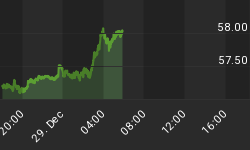China’s No. 2 e-commerce giant, JD.com, will be opening its digital doors on Google platforms by the end of this year in a bid to build up a U.S. presence to up the ante for its biggest domestic rival—Alibaba (NYSE:BABA).
The e-commerce giant’s move comes after a $550-million investment in the company by Google earlier this year, and it gives JD.com its flagship American store.
Having experienced losses of over $300 million in Q2 2018, this significant international expansion is the hoped-for growth spurt that will bring in new income.
For most of this year, JD.com has been down-trending, and its next earnings report is expected on November 12th.
The down-trending has been aided by the controversy surrounding the company’s founder and CEO, Richard Liu, for whom Minnesota prosecutors are reviewing allegations that he raped a college student during an August visit to the state. Liu denies the allegations.
Liu’s arrest in late August sparked another sell-off.
In late September, JD.com saw a bit of a stock rally following the launch of its e-commerce platform, JD CENTRAL, in Thailand—a joint venture between JD.com and Central Group, Thailand’s biggest retail conglomerate.
So that’s a pretty big footprint in Southeast Asia, now. But what about the U.S.?
The Google platform announcement is actually JD.com’s second American deal of this nature. In late August, Liu said Walmart—which owns 10 percent of the Chinese company--would work with him to expand operations in China, the U.S. and Southeast Asia.
JD.com has already been testing the American waters by selling its products in the U.S. via Walmart. Related: CME Bitcoin Futures Surge As Bullish Sentiment Grows Louder
But, according to Bloomberg, the Google deal makes things much more direct, and it already has warehouse and delivery facilities in Los Angeles.
While China’s No. 1 Alibaba operates a bit differently, JD.com is pretty much the Chinese version of Amazon’s e-commerce business, with the bulk of revenues coming from direct online sales. It has its own inventory, warehouses and logistics infrastructure. A big selling point for JD.com has been its super-fast delivery, and in the U.S., Liu is aiming for same-day delivery. Such a feat will require an amazing logistics structure here, as well, and staffing that will be much more expensive than it is in China. That is where Walmart’s help comes into play. But besting Amazon in deliveries right out of the starting gate—with or without Walmart’s help—will be more than challenging.
At home, JD.com and Walmart in August invested $500 million in an online Chinese delivery company to facilitate lightening-speed deliveries. They merged JD Daojia—JD.com’s online-to-offline business—with Dada Nexus, a crowd-sourcing delivery platform in China.
For the Chinese e-commerce giant, logistics rule the day—and so far, the company has pretty much outdone everyone else. It’s hoping it can launch another logistics coup stateside, too—because that’s the only thing that will let it come close to rivaling Amazon on home territory.
And selling to U.S. consumers directly will also give it a leg up in the tariff war between Washington and Beijing—another issue that has contributed to the stocks’ downtrend. New U.S. tariffs on $200 billion in Chinese goods went into effect on September 24, with a 10-percent tariff immediate, increasing to 25 percent by the end of the year.
By Josh Owens for Safehaven.com
More Top Reads From Safehaven.com:

















